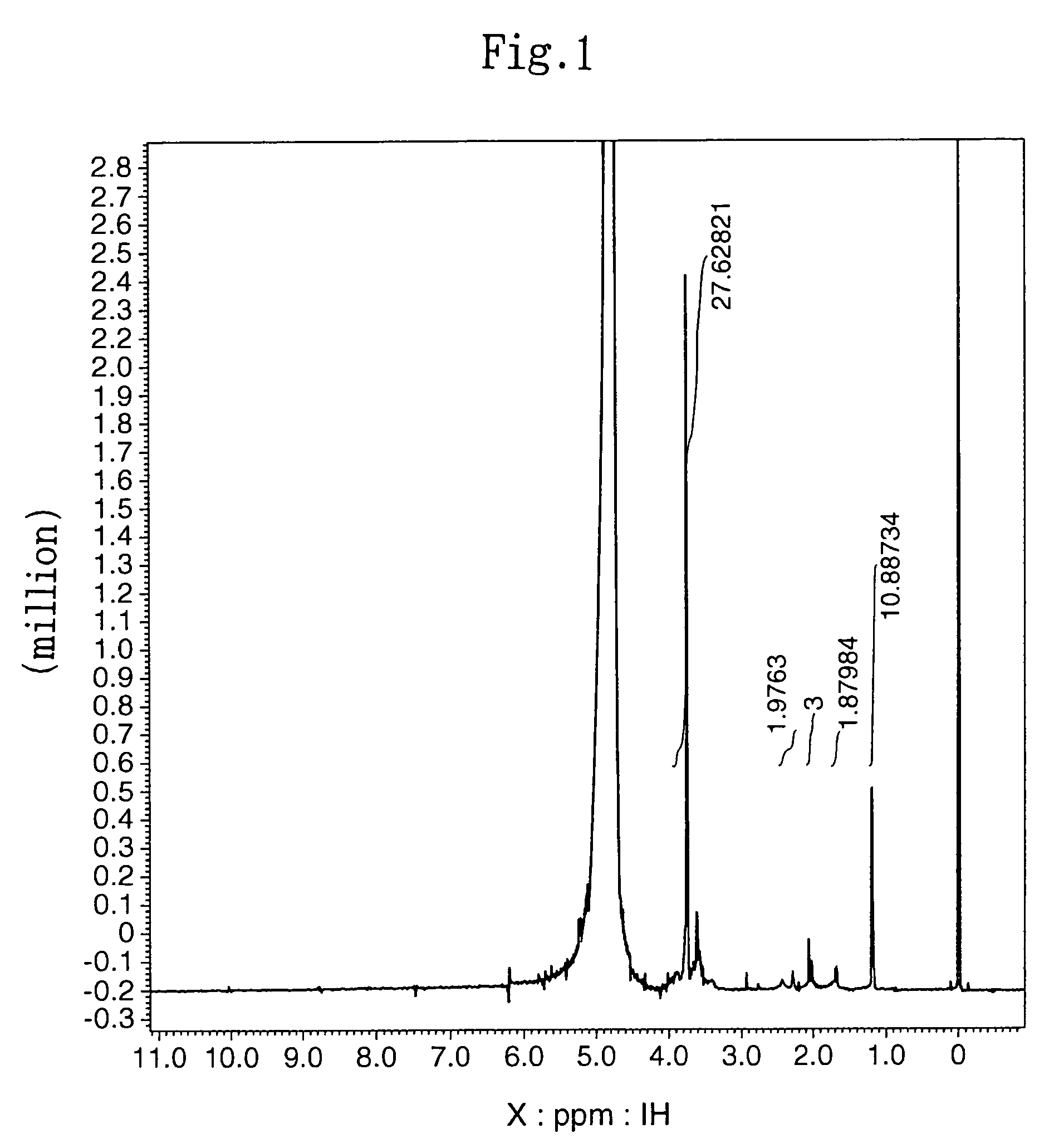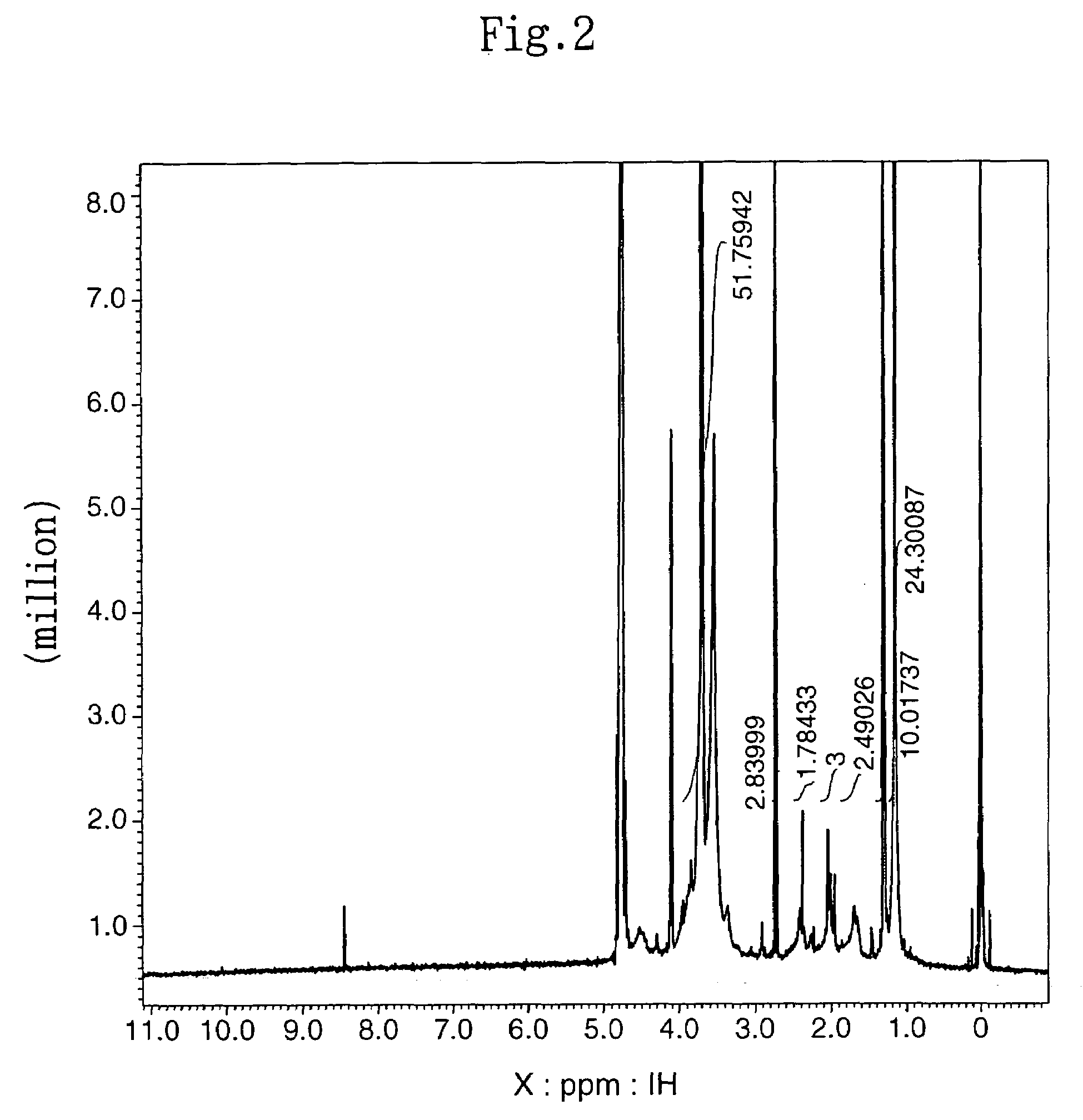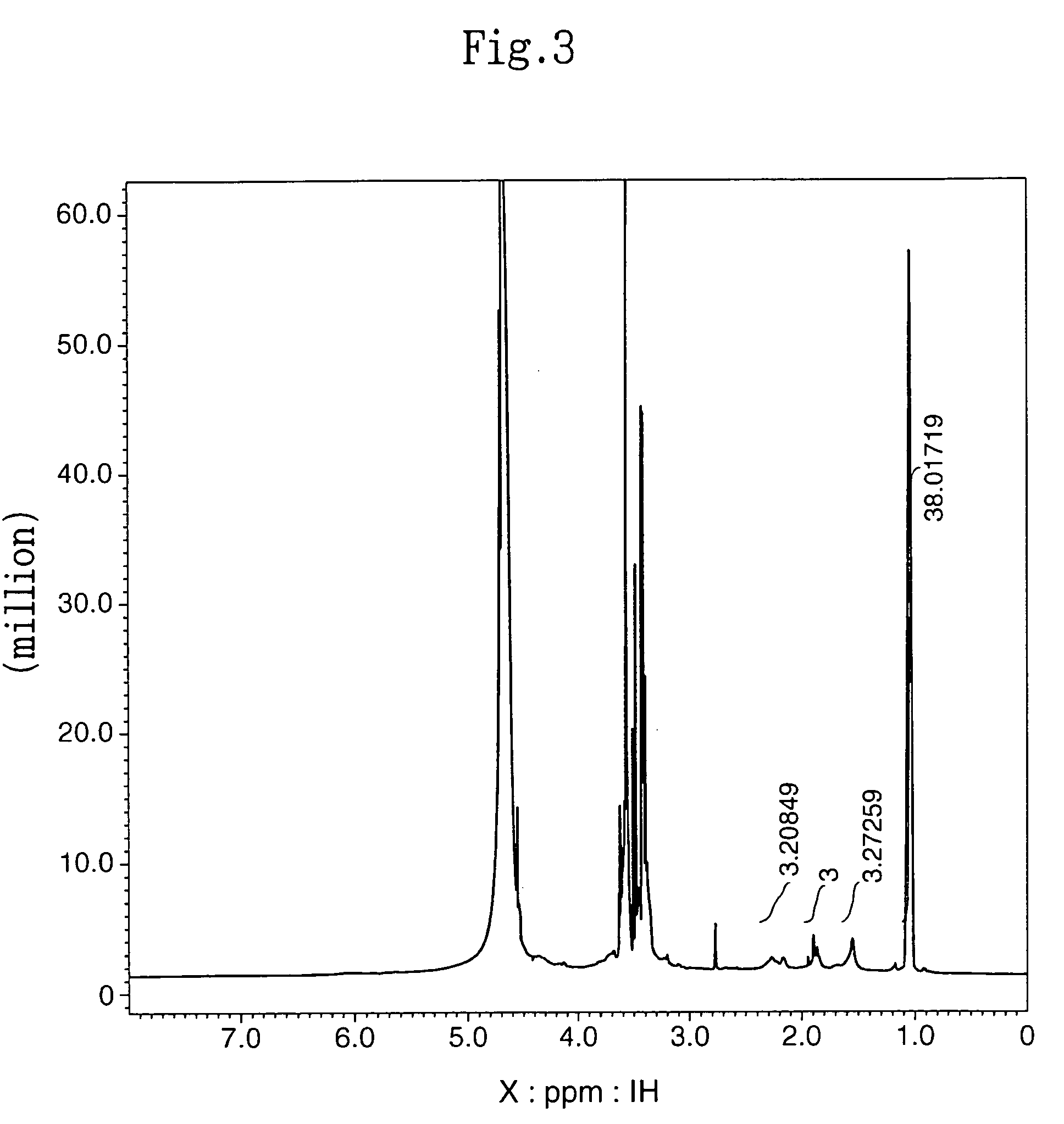Hyaluronic acid modification product
a technology of hyaluronic acid and product, which is applied in the field of new hyaluronic acid modification products, can solve the problems of pain, biocompatibility, durability, etc., and impose a great burden on patients, and achieves the effects of reducing the risk of hyaluronic acid ingestion, and improving the effect of hyaluronic acid absorption
- Summary
- Abstract
- Description
- Claims
- Application Information
AI Technical Summary
Benefits of technology
Problems solved by technology
Method used
Image
Examples
example 1
Example 1-1
(1) Synthesis of Nitrophenyl Formate Bound Pluronic L62D (Pluronic L62D-NPC)
[0089]Eight (8) millimoles of Pluronic L62D (product name) (molecular weight: 2360 daltons; LCST: 28° C.; manufactured by BASF-Takeda Vitamins) and 10 mmol of 4-N-nitrophenyl chloroformate (manufactured by Tokyo Kasei) were dissolved in 100 ml of methylene chloride (Sigma). To this solution, 10 mmol of triethylamine was added and reacted at room temperature for 12 hours. The reaction solution was washed with ether and then concentrated in an evaporator to thereby obtain 17.2 g of Nitrophenyl formate bound Pluronic L62D (Pluronic L62D-NPC).
(2) Synthesis of Hydrazide (HZ) Group-Introduced Hyaluronic Acid (HA-HZ)
[0090]One hundred (100) milligrams of hyaluronic acid (HA) with a molecular weight of 5.8×105 daltons (manufactured by Denki Kagaku Kogyo) was dissolved in distilled water at a concentration of 0.25%. The pH of this solution was adjusted to 4.7-4.8 with 5 N HCl. Then, 1-ethyl-3-3-dimethylamin...
example 1-2
(1) Synthesis of HZ-Introduced Hyaluronic Acid (HA-HZ)
[0095]The subject HZ-introduced HA (HA-HZ) (83 mg) was obtained in the same manner as described in (2) in Example 1-1 above except that 100 mg of HA with a molecular weight of 1.9×105 daltons (Denki Kagaku Kogyo) was dissolved in distilled water at a concentration of 0.5%. The HZ introduction ratio in the resultant HA-HZ was determined by proton NMR method. The results revealed that HZ was introduced into 64% of the carboxylic acid of the HA (HA: N-acetylate, 2.1 ppm; HZ: methylene, 1.7 ppm, 2.4 ppm).
(2) Synthesis of Hyaluronic Acid Modification Product in which PEO-PPO-PEO is Bound to Hyaluronic Acid
[0096]Ten (10) milligrams of HA-HZ obtained in (1) above was dissolved in 10 ml of 100 mM phosphate buffer (PB, pH 8.0). To this solution, Pluronic L62D-NPC obtained in the same manner as described in (1) in Example 1-1 was added to give a molar ratio of HZ:NPC=1:20. The resultant solution was subjected to a reaction at 4° C. for one...
example 1-3
(1) Synthesis of HZ-Introduced Hyaluronic Acid (HA-HZ)
[0099]The subject HZ-introduced HA (HA-HZ) (88 mg) was obtained in the same manner as described in (2) in Example 1-1 above except that 100 mg of HA with a molecular weight of 2.5×104 daltons (Denki Kagaku Kogyo) was dissolved in distilled water at a concentration of 1%. The HZ introduction ratio in the resultant HA-HZ was determined by proton NMR method. The results revealed that HZ was introduced into 65% of the carboxylic acid of the HA (HA: N-acetylate, 2.1 ppm; HZ: methylene, 1.7 ppm, 2.4 ppm).
(2) Synthesis of Hyaluronic Acid Modification Product in which PEO-PPO-PEO is Bound to Hyaluronic Acid
[0100]Ten (10) milligrams of HA-HZ obtained in (1) above was dissolved in 10 ml of 100 mM phosphate buffer (PB, pH 8.0). To this solution, Pluronic L62D-NPC obtained in the same manner as described in (1) in Example 1-1 was added to give a molar ratio of HZ:NPC=1:20. The resultant solution was subjected to a reaction at 4° C. for one d...
PUM
| Property | Measurement | Unit |
|---|---|---|
| phase transition temperature | aaaaa | aaaaa |
| weight average molecular weight | aaaaa | aaaaa |
| weight average molecular weight | aaaaa | aaaaa |
Abstract
Description
Claims
Application Information
 Login to View More
Login to View More - R&D
- Intellectual Property
- Life Sciences
- Materials
- Tech Scout
- Unparalleled Data Quality
- Higher Quality Content
- 60% Fewer Hallucinations
Browse by: Latest US Patents, China's latest patents, Technical Efficacy Thesaurus, Application Domain, Technology Topic, Popular Technical Reports.
© 2025 PatSnap. All rights reserved.Legal|Privacy policy|Modern Slavery Act Transparency Statement|Sitemap|About US| Contact US: help@patsnap.com



